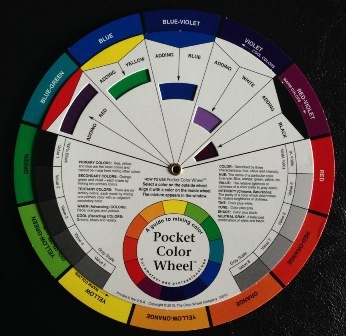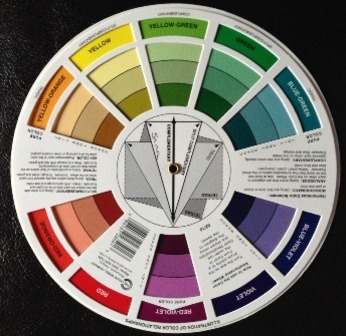
I remember when I first started wearing eye shadow I had no idea what I was doing. I couldn't quite figure out what colors matched and look good together. Being completely overwhelmed at a makeup counter is a feeling I am all too familiar with. I remember blending so many colors together that it would look like a blob of brown mush. Makeup artistry can be a tricky bastard these days. Over the years, I have learned some practical guidance that is very important when applying eye shadow. This guidance is called color theory.
Colors are defined as primary, secondary or tertiary. Primary colors are those that create every color in the spectrum: red, yellow and blue. Secondary colors are made by combining equal proportions of two of the primary colors: violet (red and blue), green (blue and yellow), and orange (yellow and red). Tertiary colors are made by mixing a primary color and its adjacent secondary color in equal proportions (red-orange, yellow-orange, yellow-green, blue-green, blue-violet, and red-violet). Sounds confusing, but all you need is a color wheel to break it down for you. Below is a picture of the pocket color wheel I always keep with me in my makeup kit and bring with me to my clients:
Complementary colors are directly opposite each other on the color wheel (e.g., blue and orange, or violet and yellow) and generally what I use when picking two colors for eye shadow. When mixed together, complimentary colors will cancel each other out and create a brown or grey color; however, when put side by side, these colors seem brighter and more vibrant, giving a greater contrast to your look. Normally you want to choose your eye shadows to complement your eye color. This is why blue eye shadow looks great with brown eyes, or purple eye shadow fits so well with green eyes.
Just a few more things to know before you get started:
1. Combining a primary color (blue) with a secondary color (violet) can create some especially bold looks.
2. Using colors that are next to each other on the color wheel (violet and red-violet) will help you create a harmonious ombré effect when placed side by side.
3. The color wheel is there to help guide you through the color selection process. There are no rules!
You can find books out there that will give you hard and fast rules on which colors go together, but I don't believe in makeup rules. I wear whatever makes me feel good and best brings out my personality. I suggest you do too. Play around with the color wheel and decide what combinations you like best for yourself. Don't let a book tell you what's right and wrong. My favorite makeup artist, Kevyn Aucoin, always said that "mistakes" often turn out to be exciting revelations. I hope you find the color wheel useful in discovering the right matches for not only your skin tone and eye color, but your personality as well. Now go on and color with confidence!

